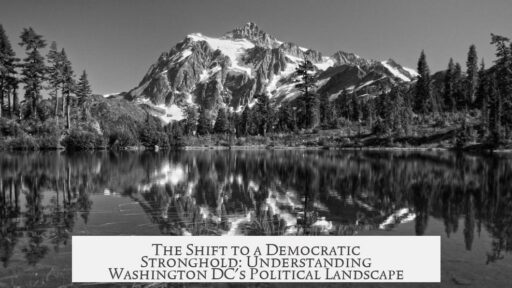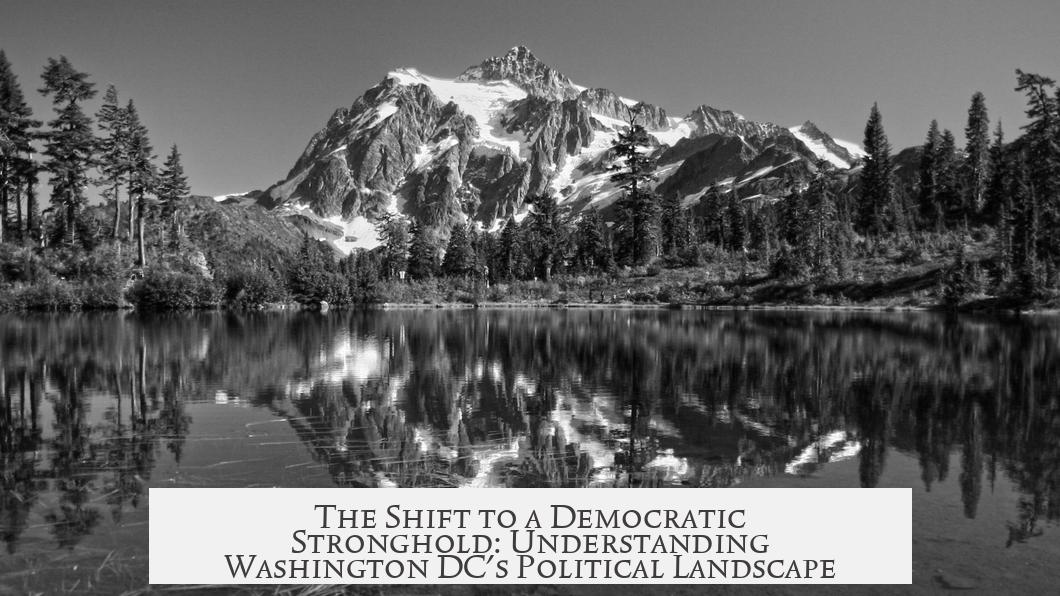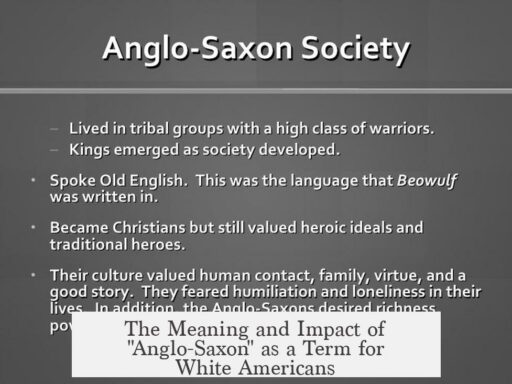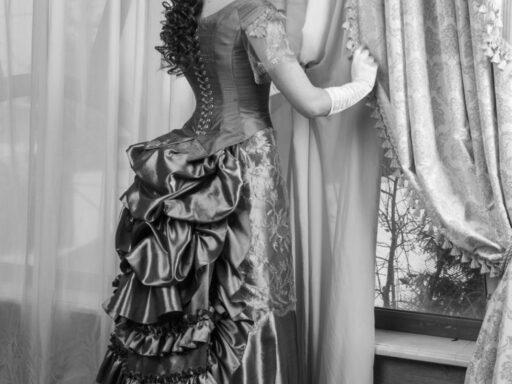Washington D.C. became consistently Democratic due to a combination of historical shifts, demographic patterns, and political realignments that have shaped its urban electorate. These factors include the mid-century party sorting, the rise of an urban-rural political divide, demographic changes from the Great Migration, and the city’s unique population characteristics. Collectively, these forces transformed D.C. into a Democratic stronghold unlike most U.S. jurisdictions.
In the mid-20th century, both the Democratic and Republican parties reorganized to reflect clearer ideological identities. This shift was not simply a geographic swap but a sorting process where Democrats attracted progressive urban voters while Republicans consolidated socially conservative rural voters. As a consequence, cities like Washington D.C. became naturally aligned with the Democratic Party, which increasingly represented urban interests and progressive policies.
Alongside this, the rise of a city versus rural political divide sharpened the differences in voting behavior across the country. This divide is more significant than regional differences alone. Urban centers consistently favor Democratic candidates, while rural areas tend to support Republicans. D.C., as a completely urban territory, fits squarely into this urban Democratic trend.
Historically, the Democratic Party included diverse factions: a conservative rural southern wing and a pro-labor urban wing anchored by ethnic whites in northern and midwestern cities. The urban wing’s demographic and ideological identities evolved, making cities Democratic bastions. This trend was accelerated by the Civil Rights Movement. Many segregationists left the Democratic Party, while the party embraced social welfare initiatives that appealed to urban minorities and working-class voters.
The Great Migration, during which large numbers of African Americans moved from the rural South to northern and mid-Atlantic cities—including Washington D.C.—played a significant role. African Americans have been a reliably Democratic constituency since the 1960s. Their growing presence strengthened the Democratic base in urban areas and especially in D.C.
Meanwhile, the Republican Party’s shift toward social conservatism and its concentration in rural and suburban regions left cities like D.C. as Democratic strongholds. The Republican base’s distinct social values and rural residency contrast sharply with D.C.’s urban, diverse population.
Washington D.C.’s unique makeup enhances its Democratic orientation. It is almost entirely urban, with a large African American population, many civil service workers, and substantial immigrant communities. These groups tend to support Democratic policies such as expanded social programs, voting rights, and immigration reform.
Reflecting these patterns, no Republican presidential nominee has ever won an electoral vote from D.C. Even in elections where Republicans have dominated nationally, D.C. consistently votes Democratic. In two noted cases, when a Democratic candidate won only one state, the District of Columbia was among those few Democratic supports.
Washington D.C.’s political behavior aligns with broader urban voting trends seen in many other major cities, especially in the South and across the country. Cities such as Atlanta, Houston, and Dallas also vote heavily Democratic, underscoring that D.C.’s Democratic allegiance fits within a national urban pattern rather than standing out as an anomaly.
- The mid-century party realignment sorted Democrats into a progressive, urban coalition.
- Urban-rural political divides concentrate Democratic votes in cities like D.C.
- The Great Migration and Civil Rights Movement increased the urban African American Democratic base.
- D.C.’s demographics—primarily urban, African American, civil servants, and immigrants—align with Democratic interests.
- D.C. has never voted for a Republican presidential candidate, highlighting its consistent Democratic support.
- Similar urban centers nationwide display strong Democratic voting trends.
How Did Washington DC Become So Consistently Democratic in Nature?
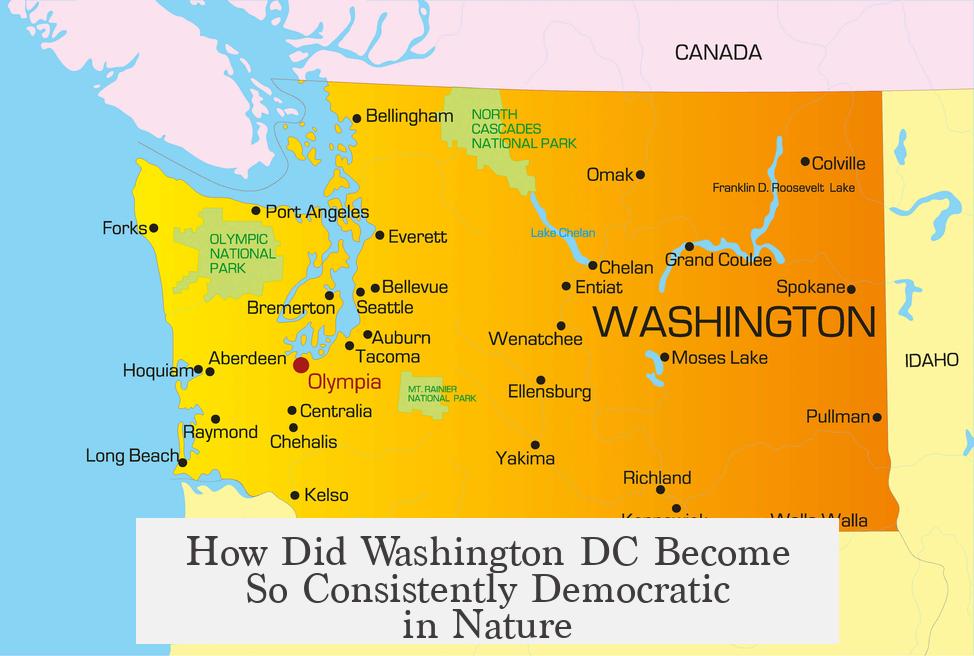
In a nutshell: Washington DC’s consistent Democratic lean boils down to its unique urban makeup, diverse population, and the way American political parties realigned over the past century. Now, let’s unpack that and explore why the city is such a blue fortress.
Political party landscapes in the U.S. didn’t just flip overnight. Around the mid-20th century, American political parties went through a realignment. This wasn’t a simple swap of voter groups but a major ideological reshuffle. Both the Democrats and Republicans sorted themselves into more coherent, distinct platforms.
Before this “Party Shift,” parties weren’t so clear-cut. Democrats had both progressive urban factions and conservative rural factions. Republicans were also mixed but leaned toward business interests. After this shift, Democrats became strongly linked with progressive urban voters, while Republicans tightened their grip on social conservatives, mainly in rural areas.
Washington DC fits right into this new pattern. As a 100% urban territory, it naturally leans Democratic. That’s not unique to D.C. Alone. Other big cities share similar voting profiles—but D.C. is an extreme case.
Think about the urban vs rural divide. Political divides today center not just on geography but on culture and lifestyle. Cities like Washington DC tend to prioritize progressive social policies. Meanwhile, rural voters often emphasize social conservatism and traditional values.
Washington DC also boasts a significant population of traditional Democratic bases. These include a large African American community, a workforce dominated by civil service employees, and considerable immigrant populations. These groups have historically leaned Democratic for decades, further entrenching the city’s party loyalty.
Think about the impact of the Civil Rights Movement and the Great Migration. In the mid-20th century, many African Americans moved from the rural South to urban centers, including D.C. This shift increased the Democratic voter base substantially. The Democrats’ association with civil rights and social welfare made the party a natural home for these new urban residents.
Meanwhile, the Republican Party underwent a transformation too. It embraced social conservatism, mainly attracting voters in suburban and rural areas. This shift arguably alienated urban voters who wanted progressive social policies, pushing cities further toward Democrats.
Democratic Party’s Historical Layers in the Capital
If you look back, the Democratic Party wasn’t always the urban, progressive coalition it is today. It once had a strong conservative Southern wing and a pro-labor wing in cities. Over the decades, these identities sorted themselves out. The Southern conservative Democrats moved away, while urban laborers and ethnic communities became the party’s urban base.
Washington DC’s demographics—particularly African Americans and government workers—complement these trends perfectly. African American voters reliably support Democrats, and the large civil service workforce often prefers the party focusing on social welfare and worker protections.
A Unique Electoral History
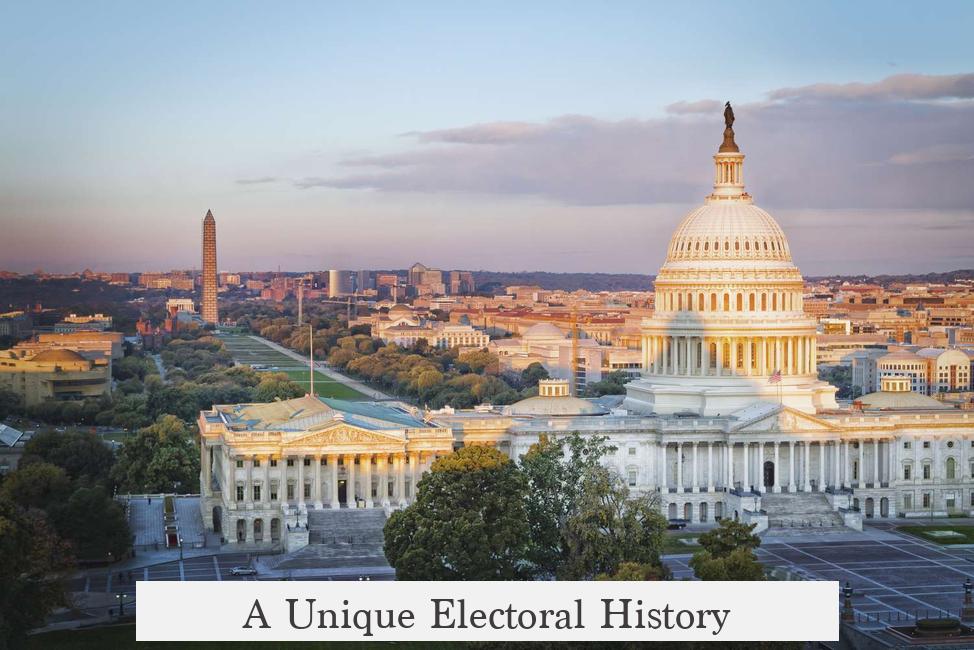
Washington DC has never cast an electoral vote for a Republican presidential candidate. Imagine that for a moment! Even in elections where one Democratic candidate barely won a single state—and Republicans dominated everywhere else—D.C. still voted Democrat. This underscores just how reliably Democratic D.C. is.
Examples include the elections when Republican candidates swept almost every state except one, and D.C. consistently stood with that lone Democratic state. It’s not just tradition; it’s a firm political reality linked deeply to the city’s identity.
Is Washington DC an Outlier?
Not entirely. Other large southern cities like Atlanta, Houston, and Dallas also lean heavily Democratic nowadays. This reflects a nationwide urban trend. Still, D.C.’s exclusivity as a federal district with a nearly 100% urban population and specific demographic makeup makes it a standout in its steadfast loyalty.
What Can We Learn From This?
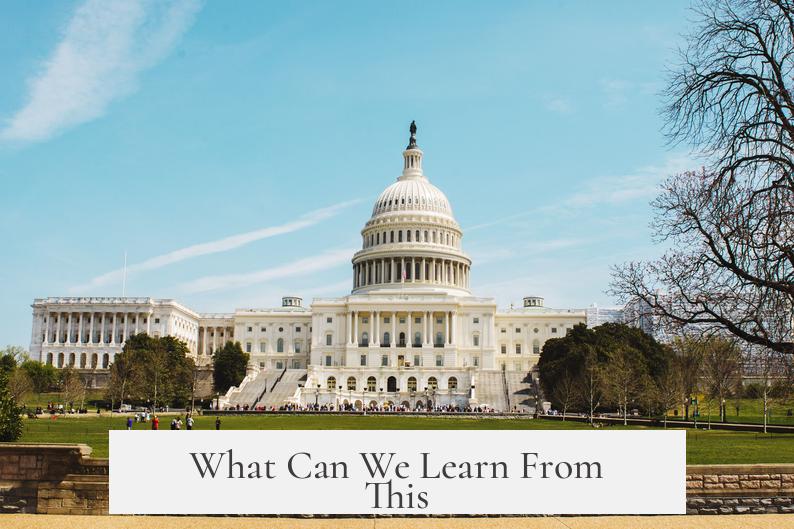
Washington DC exemplifies how urban demographics, historical migration patterns, and party realignment all interact. Political allegiances here aren’t random; they reflect deep social, economic, and cultural roots. Urban centers naturally align with parties that focus on diversity, social welfare, and progressive policies.
So next time you wonder why Washington DC is so blue, remember: the city is a perfect storm of demographics and political history. It’s urban at its core, diverse in its residents, and aligned with Democratic values through decades of political evolution.
Final Takeaway
If you want to predict political leanings, look at city demographics and history first. Washington DC’s strict Democratic alignment is a case study in how parties and populations evolve together. For political junkies and city dwellers alike, it’s a fascinating example of how ideologies shape—and are shaped by—place and people.
So, are other growing cities following this trend? And how might shifts in immigration, labor, and urban policy impact the future political landscape? Only time will tell, but for now, Washington DC holds tight to its blue flag.
Why did Washington DC become a Democratic stronghold after the mid-20th century?
The mid-century Party Shift aligned the Democratic Party with urban progressives. Washington DC, as a dense urban area, developed a voter base consistent with these values, supporting Democrats consistently since then.
How did the Civil Rights Movement impact Washington DC’s political leanings?
The Civil Rights Movement led to African Americans moving to cities like DC. This demographic became strongly Democratic, reinforcing the city’s political identity.
What role does Washington DC’s demographic makeup play in its Democratic trend?
DC’s large African American population, many civil service workers, and recent immigrants aligns with typical Democratic constituencies, deepening its support for the party.
Why do urban and rural divides affect Washington DC’s political identity?
Urban areas like DC favor progressive policies, while rural areas lean Republican. DC’s fully urban status means it naturally aligns with the Democratic Party.
Has any Republican ever won Washington DC’s electoral votes?
No Republican has ever won electoral votes from DC. Even in elections with large Republican victories nationwide, DC reliably votes Democratic.
